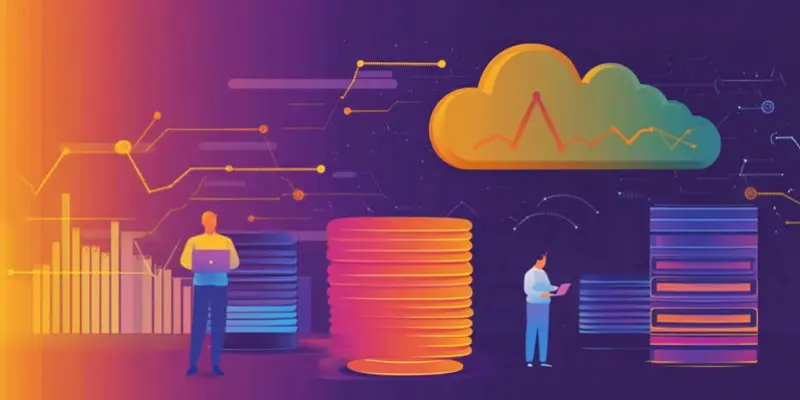In today’s digital age, the transformative power of data science is evident in everything from personalized shopping experiences to innovative healthcare solutions. As industries harness the potential of big data to drive efficiency, predict trends, and make informed decisions, career opportunities in data science are expanding rapidly.
Gathering Data
Data science begins with the critical process of gathering data from diverse sources. This initial phase involves collecting data from databases, sensors, APIs, online platforms, and various other data streams. Ensuring that the data is relevant to the problem at hand is paramount. Data scientists must strategize and implement methods to capture the most pertinent data, which will serve as the foundation for all subsequent analysis and decision-making processes.
For instance, a business aiming to understand customer behavior will collect data spanning purchase histories, website interactions, social media activity, and more. Each source provides unique insights that, when combined, create a comprehensive view of customer actions and preferences. Correct and relevant data collection techniques are essential to ensure the accuracy and reliability of the analyses that follow.
Data Cleaning
Once the data is gathered, it moves to the cleaning phase. This step, often referred to as data preprocessing, involves extensive work to ensure the data is in the correct format for analysis. Many data points may contain errors, inconsistencies, missing values, or duplicates that can skew results if not addressed properly. Data scientists meticulously clean the data by handling these anomalies, which might include filling in missing entries, correcting data inconsistencies, and removing duplicate records.
Accurate and clean data is foundational to deriving meaningful insights. The thorough cleaning and preprocessing of data ensure that subsequent analyses are based on reliable, high-quality information.
Data Exploration
With clean data in hand, the exploration phase begins. Data scientists dive into the exploratory data analysis (EDA) process to uncover the underlying structures and main characteristics of the dataset. This phase involves a range of analyses using techniques such as univariate (analyzing a single variable), bivariate (analyzing the relationship between two variables), and multivariate (analyzing the relationship between multiple variables) approaches.
The essential aim of EDA is to identify patterns and trends that may not be immediately obvious. Various visualization tools like graphs, plots, and charts are employed to provide a visual understanding of the data.
Data Modeling
Data modeling is where data scientists apply machine learning algorithms and statistical techniques to predict outcomes or explain relationships within the data. The choice of model and algorithm depends on the data characteristics and the specific questions formulated during the exploratory phase.
The effectiveness of these models is tested and validated using various techniques to ensure they perform well on new, unseen data.
Interpreting Results
The final step in the data science life cycle is interpreting the results and communicating them effectively to stakeholders. This step is crucial for transforming complex analytical findings into clear, actionable insights that can guide decision-making processes. Data scientists must present their conclusions in a manner that is understandable to non-technical stakeholders, often using visualizations, summaries, and detailed reports.
Career Opportunities in Data Science
The skills and knowledge gained in data science are highly transferable, opening up a wide array of career opportunities. Data professionals can pursue various careers, including data analyst, data scientist, machine learning engineer, and data engineer, among others. Data analysts focus on interpreting and reporting historical data to inform business decisions.
Data scientists build on this by applying advanced analytical models and machine learning techniques to predict future trends and solve complex problems. Machine learning engineers specialize in operationalizing these models, designing systems that integrate machine learning algorithms into production environments, and optimizing model performance. Data engineers, on the other hand, build the infrastructure necessary for data collection, storage, and processing, ensuring that high-quality data is available for analysis and modeling.
Applications of Data Science Across Industries
Data science is not limited to the tech sector; its applications span a variety of industries. In healthcare, for example, data science techniques are used to monitor patient health, predict outcomes, personalize treatments, and detect anomalies. The ability to analyze metrics like temperature, heart rate, and brain activity enables healthcare professionals to make more informed decisions and improve patient care.
In finance, data science provides insights into customer behaviors, helping organizations detect fraudulent activities and optimize trading strategies. Algorithms can flag unusual patterns in transactions, thereby preventing potential fraud. Environmental science also benefits from data science, with experts using data to model climate change, manage resources, and track biodiversity.
The Future of Data Science
In today’s digital era, the remarkable influence of data science is visible in countless aspects of our lives, ranging from tailored shopping experiences to cutting-edge healthcare advancements. As a result, career opportunities in data science are growing at an unprecedented rate.
Moreover, with the ongoing advancements in technology, the scope of data science continues to expand. Professionals with expertise in data science are increasingly sought after, making it one of the most promising and dynamic fields for those with analytical minds and technical skills.
Ultimately, the transformative power of data science not only enhances our daily lives but also propels numerous industries toward innovative horizons, creating exciting career paths for aspiring data scientists.

